Chrysler 2008 Annual Report Download - page 142
Download and view the complete annual report
Please find page 142 of the 2008 Chrysler annual report below. You can navigate through the pages in the report by either clicking on the pages listed below, or by using the keyword search tool below to find specific information within the annual report.-
 1
1 -
 2
2 -
 3
3 -
 4
4 -
 5
5 -
 6
6 -
 7
7 -
 8
8 -
 9
9 -
 10
10 -
 11
11 -
 12
12 -
 13
13 -
 14
14 -
 15
15 -
 16
16 -
 17
17 -
 18
18 -
 19
19 -
 20
20 -
 21
21 -
 22
22 -
 23
23 -
 24
24 -
 25
25 -
 26
26 -
 27
27 -
 28
28 -
 29
29 -
 30
30 -
 31
31 -
 32
32 -
 33
33 -
 34
34 -
 35
35 -
 36
36 -
 37
37 -
 38
38 -
 39
39 -
 40
40 -
 41
41 -
 42
42 -
 43
43 -
 44
44 -
 45
45 -
 46
46 -
 47
47 -
 48
48 -
 49
49 -
 50
50 -
 51
51 -
 52
52 -
 53
53 -
 54
54 -
 55
55 -
 56
56 -
 57
57 -
 58
58 -
 59
59 -
 60
60 -
 61
61 -
 62
62 -
 63
63 -
 64
64 -
 65
65 -
 66
66 -
 67
67 -
 68
68 -
 69
69 -
 70
70 -
 71
71 -
 72
72 -
 73
73 -
 74
74 -
 75
75 -
 76
76 -
 77
77 -
 78
78 -
 79
79 -
 80
80 -
 81
81 -
 82
82 -
 83
83 -
 84
84 -
 85
85 -
 86
86 -
 87
87 -
 88
88 -
 89
89 -
 90
90 -
 91
91 -
 92
92 -
 93
93 -
 94
94 -
 95
95 -
 96
96 -
 97
97 -
 98
98 -
 99
99 -
 100
100 -
 101
101 -
 102
102 -
 103
103 -
 104
104 -
 105
105 -
 106
106 -
 107
107 -
 108
108 -
 109
109 -
 110
110 -
 111
111 -
 112
112 -
 113
113 -
 114
114 -
 115
115 -
 116
116 -
 117
117 -
 118
118 -
 119
119 -
 120
120 -
 121
121 -
 122
122 -
 123
123 -
 124
124 -
 125
125 -
 126
126 -
 127
127 -
 128
128 -
 129
129 -
 130
130 -
 131
131 -
 132
132 -
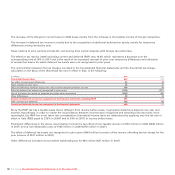 133
133 -
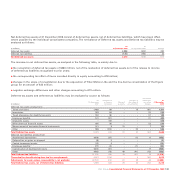 134
134 -
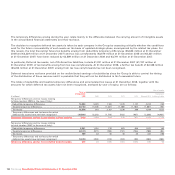 135
135 -
 136
136 -
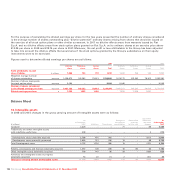 137
137 -
 138
138 -
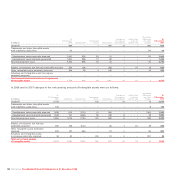 139
139 -
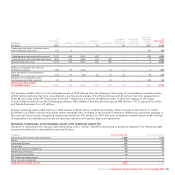 140
140 -
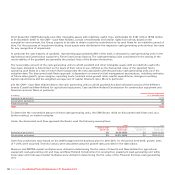 141
141 -
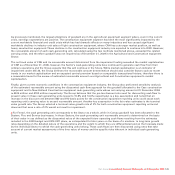 142
142 -
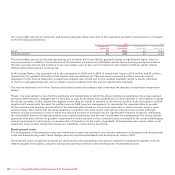 143
143 -
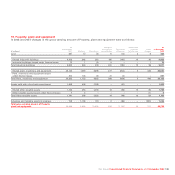 144
144 -
 145
145 -
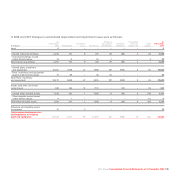 146
146 -
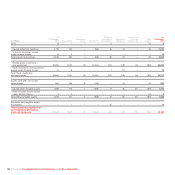 147
147 -
 148
148 -
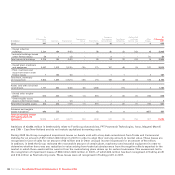 149
149 -
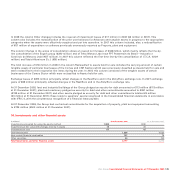 150
150 -
 151
151 -
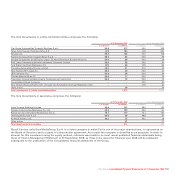 152
152 -
 153
153 -
 154
154 -
 155
155 -
 156
156 -
 157
157 -
 158
158 -
 159
159 -
 160
160 -
 161
161 -
 162
162 -
 163
163 -
 164
164 -
 165
165 -
 166
166 -
 167
167 -
 168
168 -
 169
169 -
 170
170 -
 171
171 -
 172
172 -
 173
173 -
 174
174 -
 175
175 -
 176
176 -
 177
177 -
 178
178 -
 179
179 -
 180
180 -
 181
181 -
 182
182 -
 183
183 -
 184
184 -
 185
185 -
 186
186 -
 187
187 -
 188
188 -
 189
189 -
 190
190 -
 191
191 -
 192
192 -
 193
193 -
 194
194 -
 195
195 -
 196
196 -
 197
197 -
 198
198 -
 199
199 -
 200
200 -
 201
201 -
 202
202 -
 203
203 -
 204
204 -
 205
205 -
 206
206 -
 207
207 -
 208
208 -
 209
209 -
 210
210 -
 211
211 -
 212
212 -
 213
213 -
 214
214 -
 215
215 -
 216
216 -
 217
217 -
 218
218 -
 219
219 -
 220
220 -
 221
221 -
 222
222 -
 223
223 -
 224
224 -
 225
225 -
 226
226 -
 227
227 -
 228
228 -
 229
229 -
 230
230 -
 231
231 -
 232
232 -
 233
233 -
 234
234 -
 235
235 -
 236
236 -
 237
237 -
 238
238 -
 239
239 -
 240
240 -
 241
241 -
 242
242 -
 243
243 -
 244
244 -
 245
245 -
 246
246 -
 247
247 -
 248
248 -
 249
249 -
 250
250 -
 251
251 -
 252
252 -
 253
253 -
 254
254 -
 255
255 -
 256
256 -
 257
257 -
 258
258 -
 259
259 -
 260
260 -
 261
261 -
 262
262 -
 263
263 -
 264
264 -
 265
265 -
 266
266 -
 267
267 -
 268
268 -
 269
269 -
 270
270 -
 271
271 -
 272
272 -
 273
273 -
 274
274 -
 275
275 -
 276
276 -
 277
277 -
 278
278 -
 279
279 -
 280
280 -
 281
281 -
 282
282 -
 283
283 -
 284
284 -
 285
285 -
 286
286 -
 287
287 -
 288
288 -
 289
289 -
 290
290 -
 291
291 -
 292
292 -
 293
293 -
 294
294 -
 295
295 -
 296
296 -
 297
297 -
 298
298 -
 299
299 -
 300
300 -
 301
301 -
 302
302 -
 303
303 -
 304
304 -
 305
305 -
 306
306 -
 307
307 -
 308
308 -
 309
309 -
 310
310 -
 311
311 -
 312
312 -
 313
313 -
 314
314 -
 315
315 -
 316
316 -
 317
317 -
 318
318 -
 319
319 -
 320
320 -
 321
321 -
 322
322 -
 323
323 -
 324
324 -
 325
325 -
 326
326 -
 327
327 -
 328
328 -
 329
329 -
 330
330 -
 331
331 -
 332
332 -
 333
333 -
 334
334 -
 335
335 -
 336
336 -
 337
337 -
 338
338 -
 339
339 -
 340
340 -
 341
341 -
 342
342 -
 343
343 -
 344
344 -
 345
345 -
 346
346 -
 347
347 -
 348
348 -
 349
349 -
 350
350 -
 351
351 -
 352
352 -
 353
353 -
 354
354 -
 355
355 -
 356
356
 |
 |
As previously mentioned, the largest allocations of goodwill are in the agricultural equipment segment where, even in the current
crisis, earnings expectations are positive. The construction equipment segment has been the most significantly impacted by the
current worldwide financial and credit crisis which has had dramatic effects on many industries and has caused significant
worldwide declines in industry unit sales of light construction equipment, where CNH has a stronger market position, as well as
heavy construction equipment. These declines in the construction equipment industry are expected to continue into 2009. However,
the recoverable amount of each cash-generating unit, calculated using the two methods mentioned above, exceeded the related
carrying value, and therefore goodwill was not impaired as of December 31, 2008 in the Agricultural and Construction equipment
Sector.
The net book value of CNH and its recoverable amount determined from the impairment testing exceeded the market capitalisation
of CNH as of December 31, 2008, however, the Sector’s cash-generating units have continued to generate cash flow from their
ordinary operations and the Group expects that this will continue in the future. While market capitalisation is an indicator of
impairment under IAS 36, the Group believes the recoverable amount determination should also consider factors such as recent
trends in our market capitalisation and an expected control premium based on comparable transactional history, therefore there is
a reasonable basis for the excess of estimated recoverable amount over Agricultural and Construction equipment’s market
capitalisation.
Finally, given current economic conditions in the construction equipment industry, the Group also performed sensitivity analysis
of the estimated recoverable amount using the discounted cash flow approach for the goodwill allocated to the Case construction
equipment and to New Holland Construction equipment cash-generating units whose net carrying amount at 31 December 2008
is €205 million and €192 million respectively. The Group believes that the pre-tax discount rate used for discounting cash flow to
present value in these cash generating units (equal to 15.8% and 14.3% respectively) is a key assumption and noted that an
increase in the discount rate between 880 and 910 basis points for the construction equipment reporting units could cause each
reporting unit’s carrying value to exceed recoverable amount. Another key assumption in the fair value estimates is the terminal
value growth rate. The Group selected a terminal value growth rate of 2% for both construction equipment reporting units and
observed that even a rate of 0% would not result in impairment.
For Ferrari, the cash generating unit corresponds to the Sector as a whole, while in Comau goodwill has been allocated to the
System, Pico and Service businesses. In those Sectors, the cash-generating unit recoverable amount is determined on the basis
of their value in use defined as the discounted value of the expected future operating cash flows resulting from the estimates
included in the 2009 budget and 2010-2011 plans, as extrapolated for later years on the basis of a medium- to long-term growth
rates depending on the detailed nature of the operations and the extent to which they are differentiated and on the forecasts made
by the individual Sector to which the cash-generating units belong. These cash flows are then discounted using rates that take
account of current market assessments of the time value of money and the specific risks inherent in individual cash-generating
units.
Fiat Group Consolidated Financial Statements at 31 December 2008 141
